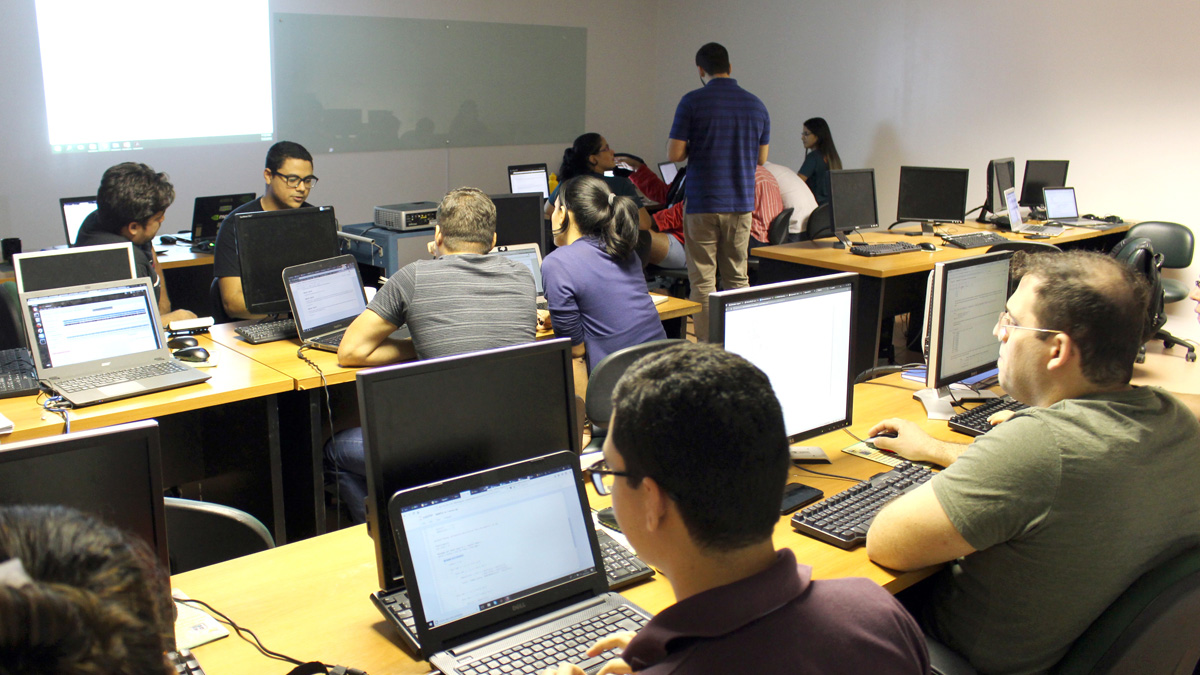On the last 25th of July, the students of the Postgraduate Program in Neuroengineering of Edmond and Lily Safra International Institute of Neuroscience (IIN-ELS) participated in special training. A NVIDIA, a world leader in computer graphics and artificial intelligence, held a course in Macaíba (RN) on high performance computing and artificial intelligence.
The event was divided into two sections. In the morning, NVIDIA solution architect João Paulo Navarro coordinated the practical course “OpenACC – 2X in 4 steps”. Participants learned how to accelerate C/C++ or Fortran software through OpenACC, a programming standard that efficiently works with the parallel architecture of Graphics Processing Units (GPU). Based on compilation directives, the user provides hints to the compiler to speed up their code, instead of writing the accelerator code themselves.
GPUs are known for fast image processing in video games. However, they can be employed in other types of activities, such as scientific research. IIN-ELS researcher, Renan Moioli, explains that the approach used in the training accelerated the processing of codes used by scientists by 16, 20 or even 30 times. “The parallel computing taught to our students is known to be effective for cases of image processing and time series analysis, such as those that IIN-ELS works on in the area of electroencephalography (EEG) It is MRI”, commented Moioli.
Software with less data processing time also generates other positive effects, such as lower electricity consumption and the possibility of developing applications with a high level of real-time processing.
Computing infrastructure for artificial intelligence applications
In the afternoon, the lecture “New NVIDIA Platform for HPC and Artificial Intelligence”. In it, Navarro showed how the use of systems that process data on GPUs has boosted techniques of Machine Learning (Deep Learning). IIN-ELS students saw examples of the use of these systems in the areas of computer vision, natural language processing, language translation, speech recognition, recommendation systems, logistics, autonomous cars and robotics.
“We are talking about computers that can be embedded in robots, or very high-speed machines for processing huge volumes of data. Last year alone, NVIDIA invested nearly $3 billion in research to improve the computational tools used by scientists and technology professionals.”
At the end of the events, other opportunities for closer ties between IIN-ELS and the company were discussed, including training and even the submission of research proposals for a high-performance hardware donation program. “Everything at the Institute pleased me, infrastructure, equipment, laboratories and above all the team of researchers. We are talking about a reference center in the field of neuroscience”, completed Navarro.
text and photos: Luiz Paulo Juttel / Ascom – ISD
Communication Office
comunicacao@isd.org.br
(84) 99416-1880
Santos Dumont Institute (ISD)
Social organization that maintains ties with the Ministry of Education (MEC) and whose mission is to promote education for life, forming citizens through integrated teaching, research and extension actions and to contribute to a fairer and more humane transformation of the Brazilian social reality.















